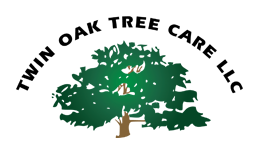A Survey of Wood Decay
Posted February 20, 2015 by Twin Oak Tree Care LLCI reviewed this article from SCA Today Edition June 2012 Volume I7 No. 2
A Survey of Wood Decay Fungi
In this article there are many different types of Wood Decay Fungi that can grow on your living trees. These types are:
White pocket rot, red ring rot (Phellinus pini)
This type in most commone worldwide. It grows on living dead branch stubs. This fungus can grow up to 10 inches across. They grow on the heartwood of trees. These have a variety of colors, size, and shape. They can have irregular tublular pores that show a maze-like pattern. This infection can have predisposed trees to be known to have breakage and wind throw.
Saprot pathogens
This type is grown in sapwood of dead and/or dying trees. You are most likely to see this to trees that have been sunburned or have had been in a fire. With this happening it can spread to the living sapwood on any tree. The process of this fungus is moving outward to inward, which causes the tree to decay.
False turkey tails (Stereum hirsutum)
This type is grown on sapwood of dead and dying trees, branches, and stumps, which causing white rot. It can also be seen in trees that have broken branches are that have recently been pruned. They occur on many oaks and other hardwoods. They typically look thin and bracketlike and sometimes flattened. They are about 2 inches across but are often seen smaller.
Turkey Tails (Trametes vesicolor)
This type is grown on many hardwoods and is very common to the saprot fungus. It can grow on dead trees or branches and seems to happen on most streesed trees of injured of dying bark. This fungus can invade to living bark and sapwood. Its a smaller type of fungus only reached about 4 inches across.
Oyster mushroom (Pleurotus ostreatus)
This type of fungus are large and have been seen up to 6 inches across. They look mushroomlike, and typically are seen grown on large branches and trunks. This can be seen on dying trees or branches that have been through a fire, sunburn or even mechanically injured trees. This is seen on most oaks and other hardwoods.
Split gill fung (Schizophyllum commune)
This type is grown on many hardwoods. It is known to look small with a leathery texture. These can grown up to 2 inches across. They occur on trees that are dying or have injured tisses. Once the tree has this fungus it can kill adjourning bark, which can also cause white rot. They occur commonly on trees that have been through heat, drought or major wounds.
Jack-o'-latern fungs (Omphalotus olivascens)
This type can be found on both dead and living trees that can grown in clusters. This are known to grow 10 inches long normally on the soil line of trees or on shallow roots. These are normally found on oaks and Eucalyptus spp trees.
Phellinus gilvus
This type of fungus are solitary or are seen as cluster. They are typically found on dead and dying trees that have been through an extensive white rot of sapwood. This can cause major branch or trunk failure. This type of fungus is known on many oaks as sudden oak death, but can be seen on many hard woods.
It is very important to check trees for fungus, espcailly if the tree is still a living tree. It can cause a living healthy tree to become hazardous which, can fail at any time.
** You can review this article in the SCA Today Newsletter Edition June 2012 Volume I7 No. 2. This article was written by Bruce W. Hagen. It was also written in the Western Arborist Summer 2010 issue.
Written by
Jami Bonner
Twin Oak Tree Care LLC
